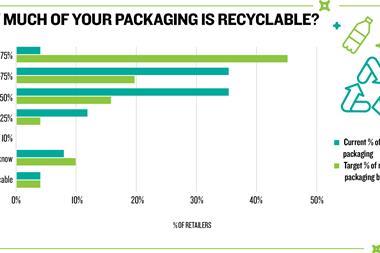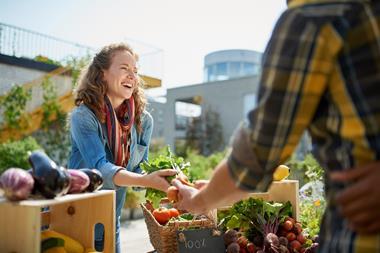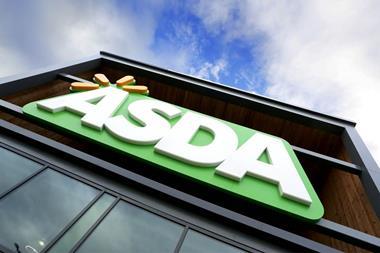A collaborative approach can help improve supply chain sustainability and resource efficiency, says Asda’s chief merchandising officer.
In 2014, president and chief executive of Walmart Doug McMillon stated: “Our job is to bring along a supply chain so that everybody in the world has access to safe, healthy food that is delivered in an increasingly transparent manner…it is the right thing to do for the planet.”
We at Asda recognise that we have a responsibility to lead on creating this future, and to be good stewards of the environment. However, to have a genuine impact on sustainability in the supply chain – whether it’s cutting down CO2 emissions, acting to prevent food waste or cutting down on energy use – there needs to be a collaborative effort which runs throughout the entire operational structure.
To have a genuine impact on sustainability in the supply chain there needs to be a collaborative effort which runs throughout the entire operational structure
We estimate more than 90% of Asda’s environmental impact lies within our supply chain. So, in 2012, we launched the Sustain & Save Exchange – an online programme to support our fresh and chilled food and drink suppliers in their sustainability efforts, providing them with access to information and best practice to increase their businesses’ resource efficiency.
The Sustain & Save Exchange facilitates networking between suppliers of all sizes and differing categories.
However, we also understand the importance of real life learning and this is why the Asda Sustain & Save Exchange programme also facilitates site visits and hosts workshops, so Asda’s suppliers can evaluate and learn from the approaches and technologies used by all types of food operations.
Preparing for the future
To date, more than 1,200 members from 350 of our fresh, frozen and chilled suppliers have collectively saved and invested £21m. Thanks to learnings from other businesses, over half have made savings on energy (51%), while one in 10 (11%) has cut back on waste. What’s more, the money suppliers are saving is theirs to keep and re-invest to make their operations even more sustainable for the future – this is the golden rule of the programme.
However, with sustainability at its core, it’s imperative that retailers and suppliers look beyond the monetary value and focus on the wider benefits of improving resource efficiency in the supply chain.
So far, the Sustain & Save Exchange programme has seen more than 35,000 tonnes of CO2 emissions removed from the supply chain between the businesses involved – the equivalent to the CO2 emissions of around 8,000 households.
This is encouraging progress but we are committed to doing more. We recently announced we have extended the Exchange to food and drink suppliers in the ambient category, a move we hope will result in our suppliers saving £50m by 2020. With figures suggesting that £9.6m has been ploughed back into supply chains so far, we are focused that we can collectively reach this goal.
While it’s hard to tell what the future holds, we do know that a more collaborative approach is successfully helping to build resilience against the growing challenges of resource scarcity and improving sustainability. Supporting our suppliers in this mission – along with all areas of their operations – will continue to be a top priority for our business.
- Andrew Moore, chief merchandising officer, Asda



























No comments yet